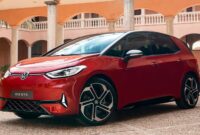The merger between Fiat Chrysler Automobiles and PSA Peugeot Citroën was finalized in early 2021 when Stellantis was officially born. Even before the deal was done, the automotive conglomerate decided to share its good fortune with its employees. This is how the “pay for performance” strategy was initiated, and since then, the auto juggernaut has already distributed €6 billion (about $6.4B at current exchange rates).
After posing strong 2023 results, Stellantis will be rewarding its workers with a big fat check this year. As a token of appreciation, employees are getting a whopping €1.9B ($2B). The company doesn’t say how many people will benefit from the profit-sharing deal but does mention around 95 percent of its workforce was included in the “pay for performance” plan last year.

33 Photos
However, it’s not all sunshine and rainbows for Stellantis. As the company inevitably moves toward an all-electric portfolio, the need for fewer people to build cars becomes apparent. Electric vehicles are less complex than cars powered by combustion engines, prompting the automaker to trim thousands of jobs. In November 2023, Stellantis announced voluntary buyout packages for 6,400 salaried employees in the United States. This followed an earlier announcement in April about voluntary exit packages offered to 33,500 US-based employees, including 31,000 hourly workers and 2,500 salaried workers.
A similar situation is unfolding in Europe, where job cuts are a constant concern amid the industry’s shift to electric vehicles. Since Stellantis was formed three years ago, it has eliminated around 7,000 jobs in Italy alone. This is despite the company’s commitment to keeping all 14 brands alive, including Lancia. The new Ypsilon, unveiled this week, signals the rebirth of the troubled brand.
The all-new Ypsilon marks a significant milestone as Lancia’s first electric vehicle and is part of the 18-car lineup without a combustion engine that Stellantis plans to launch this year. Looking ahead, the company aims to expand its electric offerings further, with a target of having 48 purely electric models in its portfolio by the end of 2024.



